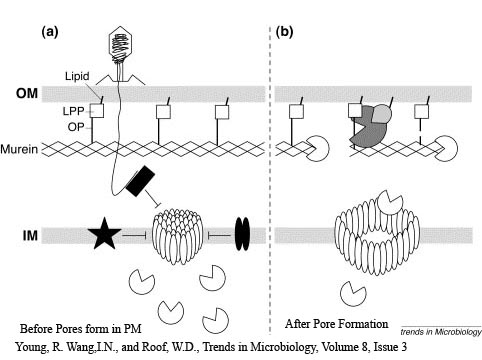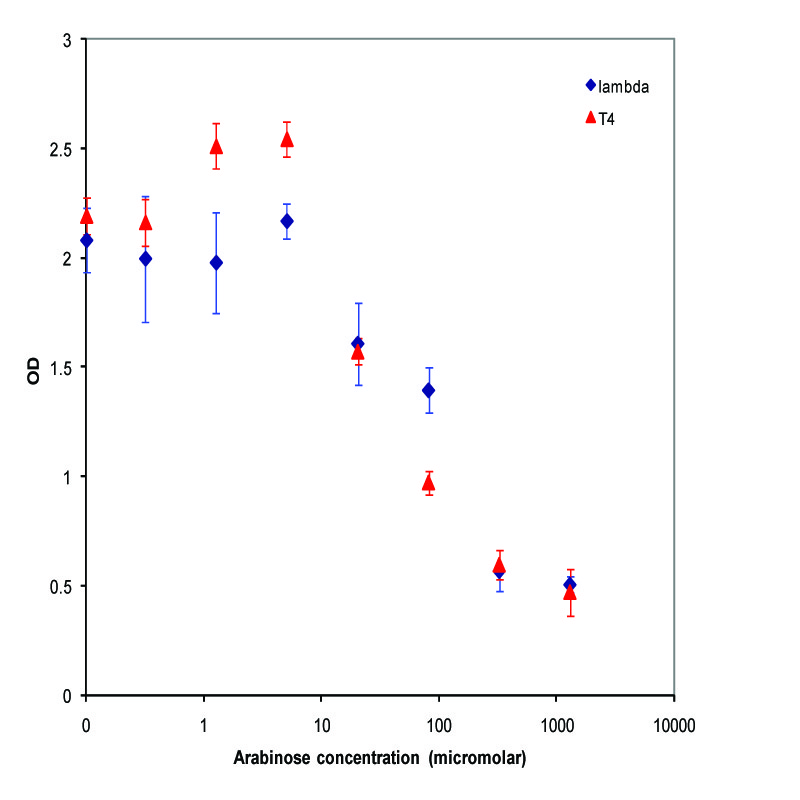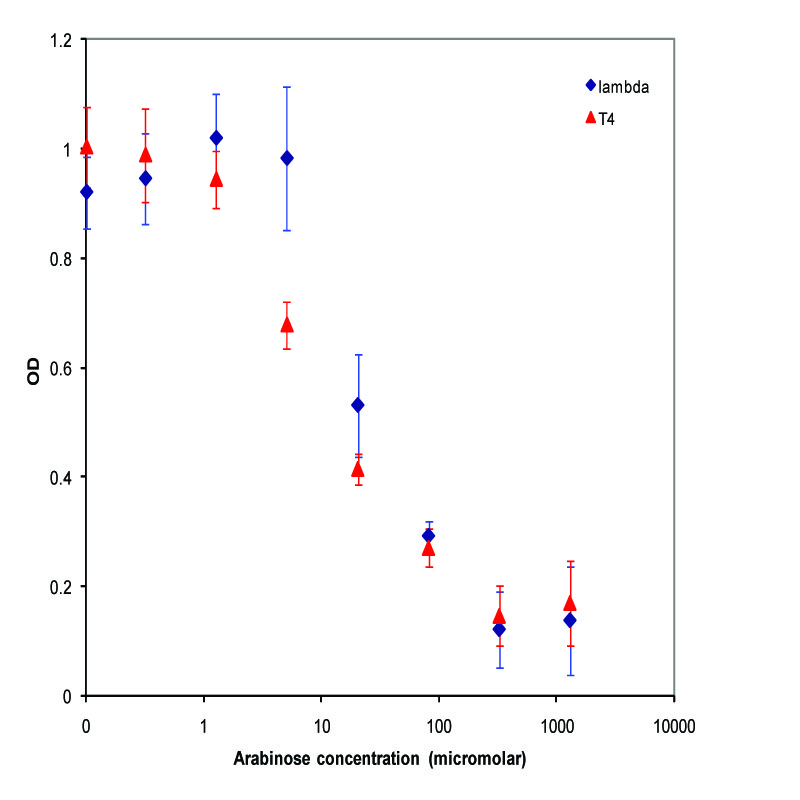Team:UC Berkeley/LysisDevice
From 2008.igem.org
| Line 20: | Line 20: | ||
=='''Data'''== | =='''Data'''== | ||
| - | [[Image:UCB_saturationLysis.jpg]] | + | [[Image:UCB_saturationLysis.jpg|400 px]] |
[[Image:UCB_midlogLysis.jpg]] | [[Image:UCB_midlogLysis.jpg]] | ||
Revision as of 21:10, 29 October 2008
Introduction
The lysis device allows for the easy release of any product produced by a Clonebot device. By using an internal lysis system that can be activated by a variety of external conditions, we hope to allow for the complete automation of product purification.
Device
Our lysis devices are based on phage lysis systems. In both the lambda and T4 phage systems that we used, a holin protein causes "pores" in the inner membrane of E. coli, which allows lysozyme to access and break down the peptidoglycan in the periplasm, causing lysis. An antiholin molecule inhibits the activity of holin, and is used in the natural systems to control the timing of lysis.
In our device, the production of lysozyme and holin is activated by an inducible promoter, while antiholin is constituitively produced. Our lysis device is tunable using these two promoters - we have produced several variations, in particular, devices using pBad for arabinose induced lysis, and a device using a promoter that turns on in response to an absence of magnesium.

Characterization
We chose to characterize two of our lysis devices - K112019 and (K# that we'll give to the T4 device). After confirming that the devices did indeed work, we took the miniprepped plasmid, transformed into the MC1061 strain, and then picked 5 colonies for each device. We grew each colony in 200 uL of LB of the appropiate antibiotic for an hour. This culture was split between 8 wells of a 96 well culture plate with 1 mL of media in each well. The plate was incubated on a shaker at 37 degrees for 2 hours, when the OD was measured and arabinose added. After another incubation period, the final OD was measured.
 "
"


